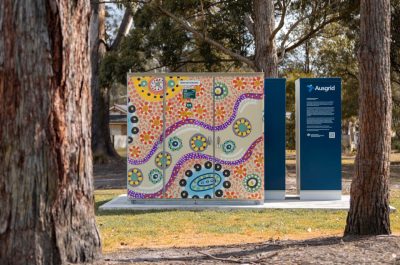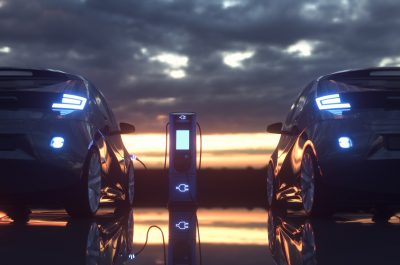Report shows how best to surf the EV wave
Australia lags way behind other nations in uptake of electric vehicles (EVs). However as increasing numbers of car manufacturers commit to the EV transition and government policy settings support customer adoption, this will change – and it is likely to change quickly. Will our power grid be swamped by the tsunami, or can we surf the wave? A major two-year research project, just wrapped up in Australia, offers some answers to how we can give customers a more affordable EV journey that can also help support the power system.
EVs present benefits and challenges for our electricity distribution networks, depending on when, where and how they draw power from the grid.
The charging behaviour of EVs requires networks to rethink how they will invest in, build, and operate the grid of the future. They must consider the potential impacts of unmanaged EVs on the grid, as well as what EV hosting capacity will look like five, ten and 20 years from now.
A recent report by the University of Melbourne provides insights and recommendations from a major two-year EV Integration project funded by Energy Networks Australia (ENA) and the Centre for New Energy Technologies (C4NET) in collaboration with the Australian Power Institute (API). The project investigated the impacts on distribution networks of unmanaged EVs using real-world usage patterns and explored potential solutions to tackle these issues.
In our previous articles EVs and the grid and Are we ready for the EV revolution, we outlined the likely impacts of unmanaged charging, the effectiveness of EV management strategies and importance of time of use (ToU) tariffs.
What solar panels were to the mid-2000s, electric vehicles will be to the 2020s and beyond. But if they are plugged in unchecked without clear policy leadership, they will wreak havoc on the electricity grid. If we have millions of Australians coming home during heatwaves, turning on air conditioners and starting to charge their EV, our grid simply won’t cope. The good news is this can be easily avoided – if we act soon.
Most Australian homes pay a flat rate for their electricity regardless of what time they use it, but this is changing, and more are moving onto peak/off-peak tariffs. By encouraging customers to charge their EVs during off peak times, not only will it lessen the load on the grid, but it will mean cheaper power bills for all customers.
For example, if the difference between peak and off-peak rates is 15 cents per kilowatt hour, the average EV owner might save up to $525 per year by charging during off peak rather than peak times.
In this article, we present a summary of recommendations from the final report. These recommendations could lay the foundation for successful integration of EVs in a cost-effective manner to both customers and networks.
Recommendations:
Early EV uptake (Five years or up to 20 per cent EVs)
- Reinforcement of weak spots on the network where necessary. The analysis showed that in parts of the network that were close to their hosting limits (congested) or in rural areas, distribution networks generally had less EV hosting capacity compared to urban and metropolitan networks
- Roll out of residential EV smart chargers – smart chargers can enable customers to effectively and easily respond to electricity price signals. This maximises the benefits of home charging, while minimising the negative side effects
- Encourage smart meters with the installation of EV smart chargers
- Tariff reform to reward customers willing to be flexible with their usage
- Roll out of public charging stations to encourage destination charging
- Develop a nationally consistent standards for residential and commercial EV chargers including the adoption of international standards such as OCPP1.6[1].
Medium EV uptake (10-15 years or up to 40-60 per cent EVs)
- Mandate EV smart chargers for all 7kW and 22kW home EV chargers
- Cost reflective tariffs should be implemented
- Continue to encourage workplace, destination and public charging to lower the length of home charging.
- Nationally consistent standards should be developed by now
- More “prices for devices” retail tariffs. This can encourage more participation in demand response markets. It may also allow EV charging to occur even later at night than a normal TOU tariff
- Integration of local-level distribution services. Distribution system operators (DSOs) of the future, with better network visibility, can buy demand reduction services for asset congestion within a pre-defined area.
High EV uptake (20+ years or more than 60 per cent EVs)
- All EV chargers should be smart chargers with smart meter
- Distribution network local-level services and marketplace for demand reduction in response to asset congestion needs to be wide-spread with more ‘prices for devices’ tariffs
- Public charging, workplace charging, and destination charging should be commonplace to encourage off-peak charging.
The main take away of the report is that combining smart EV management (through smart chargers) with cost-reflective tariffs can maximise benefits to both customers and networks and save customers money in bills by increasing network utilisation and reducing the need for investment.
Australia is still an early adopter with EV market share of less than four per cent. We have an opportunity to design and coordinate policy that ensures our power system delivers for customers when the future EV wave hits. This will ensure we can avoid spending more than we need upgrading electricity infrastructure, deliver major savings for customers on power bills and support grid security and reliability.
The full report is provided here.
Other project related materials are provided on our ENA website, University of Melbourne project page and C4NET project page.
[1] https://en.wikipedia.org/wiki/Open_Charge_Point_Protocol


